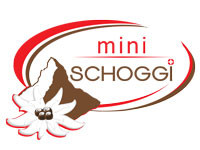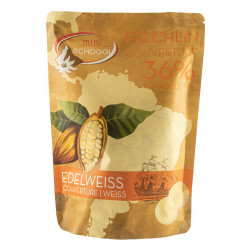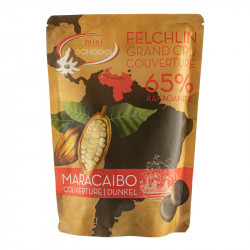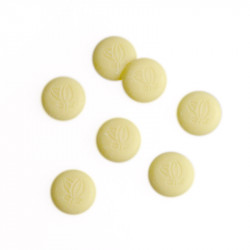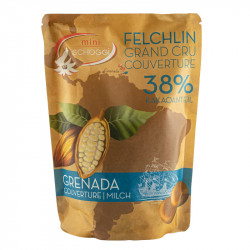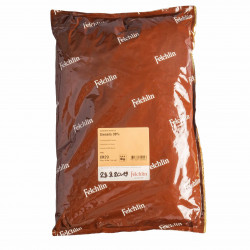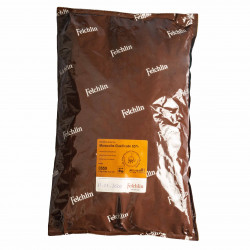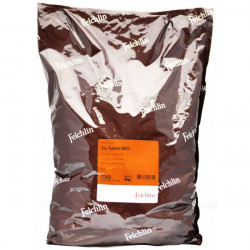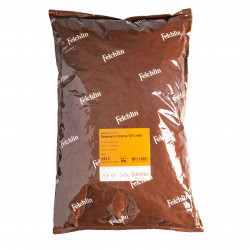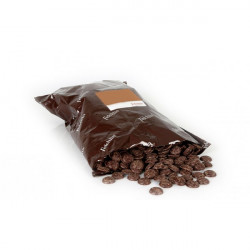Felchlin Couverture
Felchlin
Felchlin supplied its first couverture to bakers and confectioners back in the early 1920s and has been passionately dedicated to the production of outstanding chocolate and various semi-finished products ever since. In 1988, the "Condirama" was established as a training center for pastry chefs and confectioners from all over the world. In 2004, Felchlin Couverture "Maracaibo Clasificado 65%" was awarded the gold medal "Best Chocolate in the World" and since then many other awards have followed and the company has become world champion more than once. One thing is therefore clear; Felchlin belongs to the absolute world class in the field of chocolate.
There is still a chocolate factory in Schwyz today. Grand Cru couvertures with a grandiose intensity of flavor, unique specialties and various high-quality semi-finished products are produced there, all made from fine cocoa. Max Felchlin AG supplies its products to private customers, retailers and manufacturers in over 40 countries.
Felchlin's couvertures
Felchlin couvertures are special for various reasons. For example, the large proportion of Grand Cru couvertures is particularly striking. These are couvertures made from the finest cocoa beans from a single location. This purity allows the cocoa beans to fully develop their own flavor. Each variety has unique flavor notes that can be specifically supported and combined. They therefore impress with their intense cocoa flavor and offer a unique sensory experience.
In order to be able to guarantee high quality and consistent taste in the long term, Felchlin takes various measures. The gnarled cocoa trees grow in the tropical rainforests of various provinces in South and Central America as well as in Africa. The cocoa trees are well cared for in the interests of sustainability. The treatment is decided in cooperation with the cocoa farmers, who can contribute a great deal of know-how and learn new things. As a result, work is increasingly sustainable and without harmful pesticides. Here, work is carried out with close regional ties, cocoa farmers are supported and trained to improve cultivation. Where possible, this also includes compliance with organic standards. As cocoa does not like to grow in the blazing sun, it is often grown in mixed crops and so palm trees, for example, provide them with shade and their bananas can also be used. Such mixed cultures also support biodiversity.
Fermentation and drying are monitored and adapted to the harvest and the conditions. The beans are then packed in large sacks and shipped. This is how fine cocoa beans from Venezuela, Ghana, Bolivia, Ecuador and many other countries reach Felchlin Switzerland. Here, the beans are sorted, stored and processed. After an extensive quality analysis, the cocoa beans are carefully crushed into cocoa nibs and then transformed into a melt-in-the-mouth mass in the conching machine. This is also where the inherent aromas can be tasted. While one variety has a delicate scent of orange blossom, another tastes sweetly of honey and plum. Other ingredients are also added to suit the flavor profile and the end goal. For a delicate Grand Cru milk couverture, for example, sugar and milk powder are added. Felchlin even has a very special variety with mountain hay milk. Other popular ingredients are vanilla from Madagascar and additional cocoa butter. This makes the mass nice and runny and allows it to be processed into various chocolate products later on. Once the couverture has been molded and beautifully packaged, it is ready to be delivered to confectioners, pastry shops, wholesalers and private customers.
Couverture or chocolate - what is used for what?
Chocolate and couvertures look similar, taste similar and the terms are sometimes used interchangeably. However, there are some small but important differences that determine which one you should choose for your project. Most important for many creations are the flow properties and the behavior during the setting process. If you are depositing your own pralines, couvertures are recommended. The mass becomes nice and fluid and can be filled and poured out without any problems, the thin layer sets nicely, becomes glossy and can be removed from the mold without any problems after filling, sealing and cooling. Due to its composition with more sugar and alternative fats, chocolate bars remain viscous, are difficult to pour and would be almost impossible to remove from the mold afterwards. If you do somehow get it out again, it will probably be gray or dotted.
Another reason for the different areas of application is the taste. Because it doesn't matter whether you want to make a tiny chocolate composition or a large chocolate "structure": truffle chocolates are filled with the finest ganache and other ingredients and sealed with pure couverture. Marzipan or layered chocolates are dipped in pure couverture. The base of your very own Easter bunny also consists of (at most slightly "perfumed") raw chocolate - your own creations are always made to a considerable extent from pure, unadulterated chocolate. You should therefore make sure that the raw material is of excellent quality, so that you have all the more scope for the creative part of your personal chocolate idea.
Of course, we wouldn't want to miss out on our favorite chocolate either. You can easily buy it in the supermarket or even make it yourself. Couverture provides the perfect base for homemade chocolate bars. It is poured pure or mixed into a mold and refined with other ingredients. For example, add raisins, freeze-dried pineapple, solid pieces of caramel or crunchy pieces of nuts. These personalized chocolate bars also make perfect gifts.
And what is used to make ganaches and creams? Here the boundary is a little less clear. Technically, it is possible to use a high-quality chocolate bar to make a delicious chocolate mousse. However, the perfect raw material here is also couverture due to its taste and flow properties. We recommend the use of couverture, especially when it comes to pure chocolate mousse without other flavors such as lemon, grapefruit or cinnamon, as well as for the production of ganaches in general.
Can I use normal chocolate instead of couverture?
Tempering can be a bit of a challenge at first, but with a little patience and skill you'll soon make progress! It may be tempting to simply use a standard chocolate bar, and this does work in some cases such as baking or for an airy chocolate mousse. As the chocolate does not necessarily have to be shiny in the end product, it is not so important whether it has been tempered correctly. The consistency often doesn't matter either, which is why chocolate bars can be a cost-effective and practical choice.
However, when it comes to depositing pralines, making homemade chocolate bars or creating a festive Easter bunny, couverture is the key to success! It melts evenly and ensures that your sweet treats have a perfect sheen. The use of conventional chocolate can result in a considerable loss of appearance and taste, and it is usually not possible to remove the solid mass from the polycarbonate molds. In such cases, the only option is often to dissolve it with hot water.
But don't worry! If you want to make delicious cakes with chocolate chips or a simple mousse, you can use chocolate bars without any problems. However, to make high-quality pralines, smooth ganache or shiny coatings, it is important to use first-class couverture.
Here we show you how to temper and process it correctly to achieve a shiny and crisp result. Discover the inoculation method and put it into practice in your own kitchen! You can find more valuable tips on tempering on our blog. And if you would like to try it out under supervision, we cordially invite you to our tempering course!
Vaccination method
The seeding method is an impressive technique in which stable crystals in the form of drops are introduced into the melted chocolate mass. First, we melt two thirds of the required couverture drops at 45 °C to ensure that all the fat crystals are completely dissolved. Once the mixture has cooled slightly, we add a third of fresh couverture drops, which also contain stable crystals. Stir gently to dissolve the pieces and distribute them evenly in the warm mixture.
This method is known as the seeding method, as we add solid, cooler pieces with stable crystals to the liquid mixture without stable fat crystals - a "seeding" so to speak. We then bring everything to the optimum temperature. For dark couverture with a high cocoa content, we recommend a temperature of 32-33 degrees, while lighter varieties are ideal at around 28 degrees.
The optimum temperature is usually also indicated on the packaging. You can also find lots of valuable tips and suggestions in our blog - let it inspire you!
Recipes and ideas
Light and dark chocolate coatings are perfect for cakes, bars, desserts and many other treats. There are no limits to your creativity with chocolate! From tempting pralines, delicious chocolate bars and artful decorations to heavenly chocolate mousse and succulent chocolate cakes - you'll find lots of exciting and sweet articles on our blog.
If you love the world of chocolate as much as we do but don't know exactly how to make the treat, we warmly invite you to join our inspiring courses! Here you will learn how to make all these sweet delicacies at home - sometimes all chocolate and sometimes with other ingredients for maximum enjoyment. If you're looking for ideas for your next sweet temptation, you'll definitely find them here! And don't hesitate to make full use of the instructors and ask all your questions. You'll get answers and useful tips that you can put into practice straight away.
Are you still looking for an idea for your next treat? Here are some suggestions for treats made from the best Felchlin couverture.
Chocolates are always an excellent choice, because who can resist them? They are perfect as a gift, a sweet treat for in between meals or a real eye-catcher on any table or buffet. They are very easy to make and can be easily adapted to your skills. If you already have some knowledge, you can make the hollow shapes yourself. However, if you are short on time or just starting out on your chocolate journey of discovery, you can easily order them from our store. You'll find a wide variety of shapes in our range, so you're sure to find the right one for every occasion. Your order is usually packed on the same day and, if you order in good time, delivered the next working day. If you prefer the finished hollow shapes, you can easily decorate them with a delicious filling and an attractive coating. Fill the hollow bodies with a delicious ganache in the right flavor or add other ingredients as desired. Caramel and nuts complement the delicate taste of milk chocolate ganache perfectly. Don't forget to leave enough space around the edges so that you can seal the hollow bodies properly later.
You also have many options for dark ganache. Refine it with a dash of alcohol, almonds, coffee or orange paste - make sure you add enough to maintain the consistency.
The white ganache is a great base that you can refine with pistachios, grated coconut or your favorite alcohol. A delicious ganache enhanced with a puree of wild berries will bring out its base flavor beautifully.
When you make your own chocolate bars, you have the opportunity to try out many exciting combinations. Make sure that the ingredients do not contain any liquids. For example, you could sprinkle crunchy pieces of nuts and dates over the milk chocolate - freeze-dried dates or berries are deliciously fruity and sweet. A tried and tested, classic combination is milk chocolate with whole hazelnuts. For white chocolate bars, almonds or freeze-dried wild berries are particularly tasty.
If you appreciate the art of patisserie, chocolate is your best ally. You can use it to create crispy bases, delicate mousses and stylish coatings. Do you fancy conjuring up creatively designed cakes? Then try melting couverture drops and mixing them with cocoa butter to create a very special effect. The fat crystals give your creations a radiant shine that does not require tempering and is ideally poured directly over the frozen patisserie piece. Refine the glaze to your liking to embellish your treats.
Chocolate decorations are not only a treat for the eyes, but also incredibly tasty! With couverture, you can effortlessly create elegant chocolate spirals, flakes or drops. Designing a cake with a fan-shaped pattern is also child's play with textured foil and colored cocoa butter. If you want to learn more about the art of decorating with chocolate, our chocolate decorating course is just the thing for you! Here you will learn the best techniques from an experienced expert on site and have all your questions answered. If things don't go according to plan, you will immediately receive valuable tips on how to improve your skills. So you can relax and go home proudly with your homemade decorations! Chocolate mousse is very easy to prepare with full cream and chocolate bars from the supermarket. However, for an even more intense and refined taste experience, you should replace the chocolate bar with high-quality couverture drops. This will give you a wonderful consistency and a delicious cocoa flavor. You can try different varieties, although the quantity can vary depending on the type of couverture. Dark varieties usually require a higher proportion of cream than light chocolate. If you would like to delve deeper into the art of mousse preparation, we recommend the basic cake course I and the eclair course. In each of these two courses, you will create a wonderfully airy chocolate mousse. In the first course, the liquid mixture is carefully mixed into the whipped cream, while in the second course the ingredients are already whipped together. In this way, we conjure up two delicious mousses that can be used in a variety of ways. A real treat that you will want to experience again and again!
